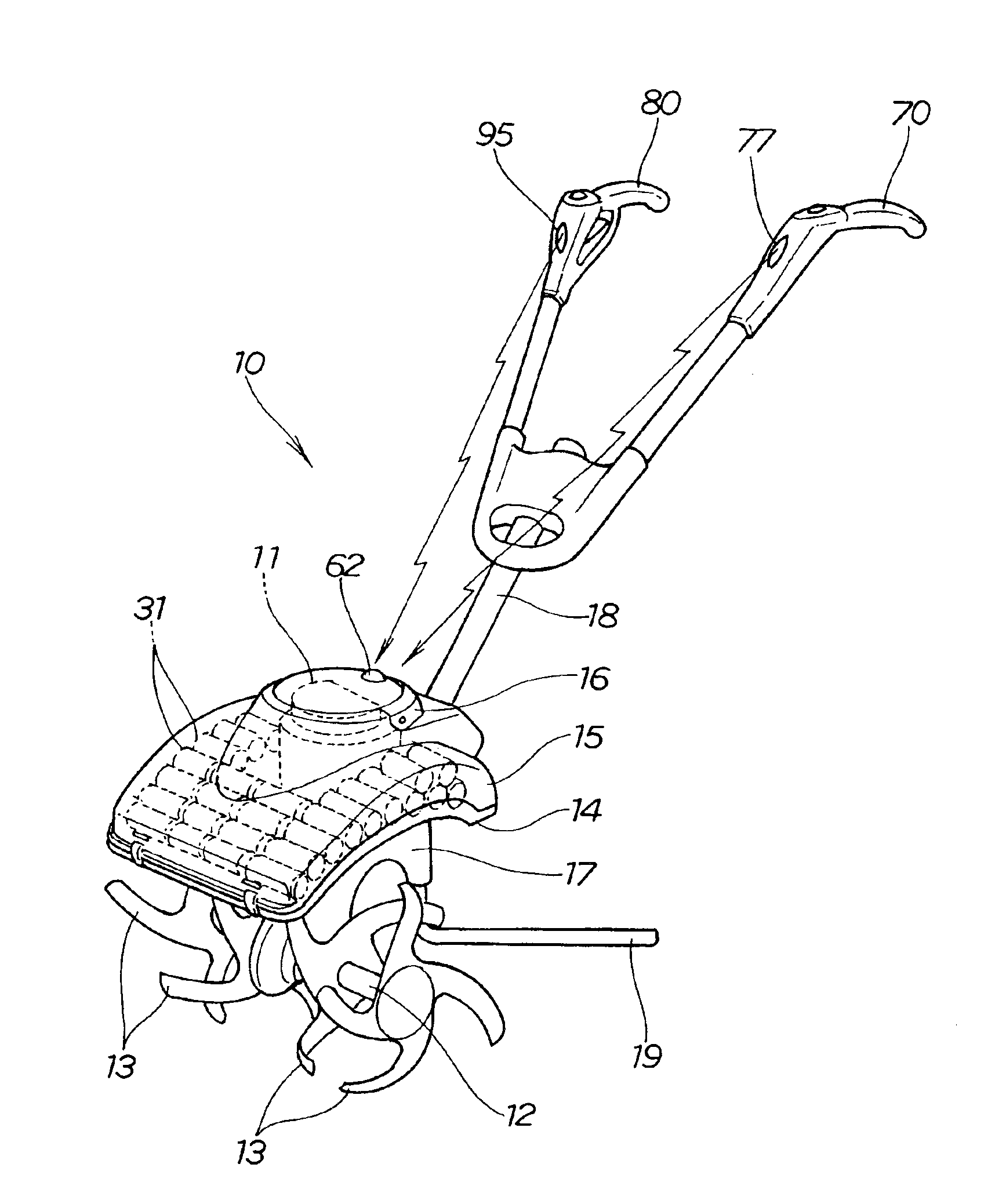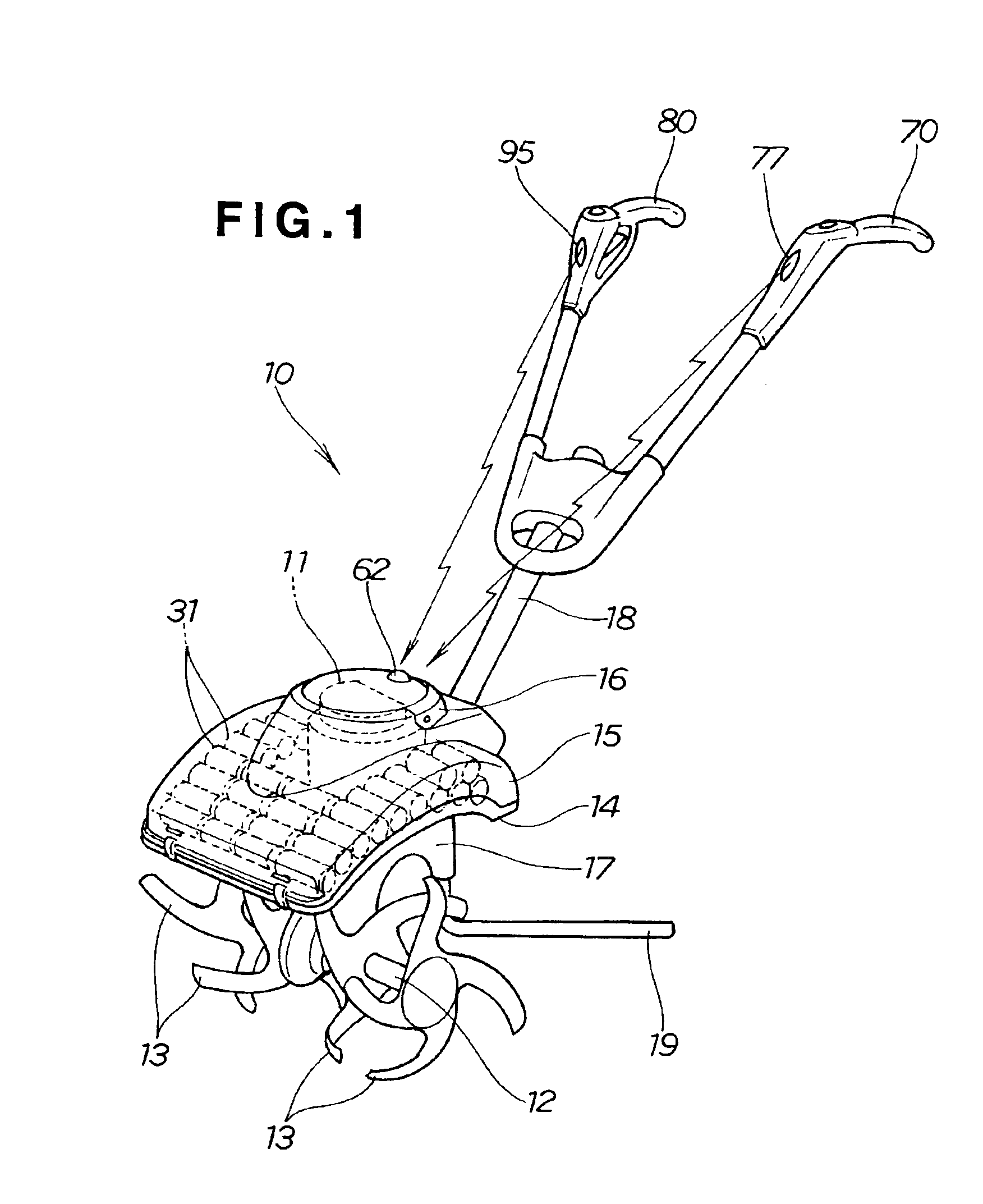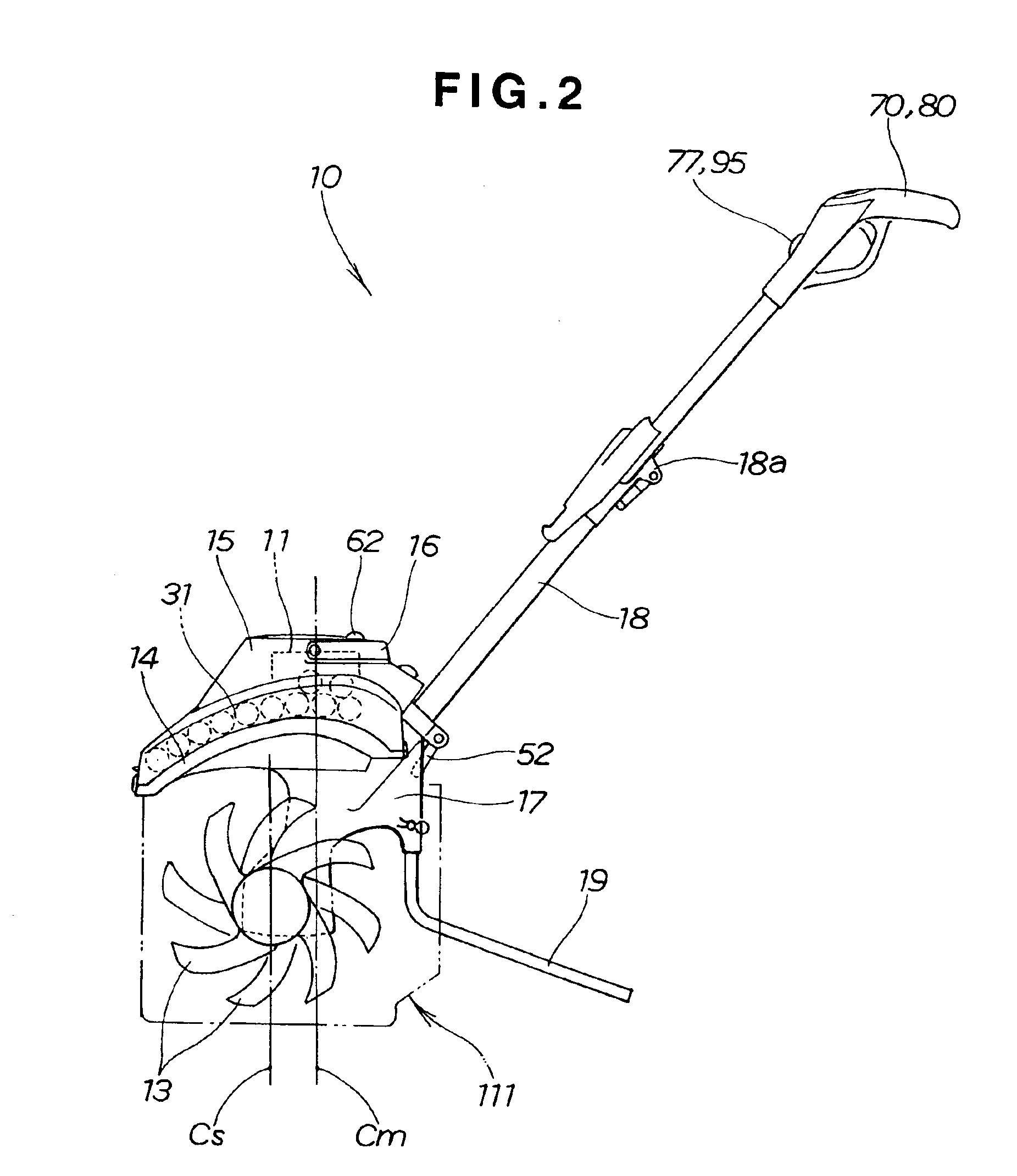Walk-behind electric cultivating machine
a technology of electric soil cultivating machine and electric motor, which is applied in the direction of tilling equipment, agriculture tools and machines, agriculture, etc., can solve the problems of increased burden on the human operator, poor cultivating finish, insufficient cultivating performance, etc., to reduce the possibility of unfavorable cultivation, enhance the linear traveling capability and operability of the machine, and limit the effect of unfavorable cultivation
- Summary
- Abstract
- Description
- Claims
- Application Information
AI Technical Summary
Benefits of technology
Problems solved by technology
Method used
Image
Examples
Embodiment Construction
[0033]Reference is now made to FIGS. 1-7 showing a walk-behind electric cultivating machine according to an embodiment of the present invention.
[0034]The walk-behind electric cultivating machine 10 is a self-propelled, front-tine cultivating machine, which is constructed to transmit driving power from an electric motor 11 (i.e., drive source of the machine 10) to a cultivating shaft 12 so that the machine can travel on a field through rotation of a plurality of cultivating members in the form of cultivating claws 13 provided at left and right end portions of the cultivating shaft 12 while cultivating the field with the rotating cultivating claws 13. The cultivating claws 13 are covered with an upper fender 14, and an upper cover 15 covers an upper surface of the fender 14. The upper fender 14 and upper cover 15 define first and second cover members. respectively, forming an enclosure having an interior space Sp for housing the electric motor 11 and batteries 31 for supplying electri...
PUM
 Login to View More
Login to View More Abstract
Description
Claims
Application Information
 Login to View More
Login to View More - R&D
- Intellectual Property
- Life Sciences
- Materials
- Tech Scout
- Unparalleled Data Quality
- Higher Quality Content
- 60% Fewer Hallucinations
Browse by: Latest US Patents, China's latest patents, Technical Efficacy Thesaurus, Application Domain, Technology Topic, Popular Technical Reports.
© 2025 PatSnap. All rights reserved.Legal|Privacy policy|Modern Slavery Act Transparency Statement|Sitemap|About US| Contact US: help@patsnap.com



